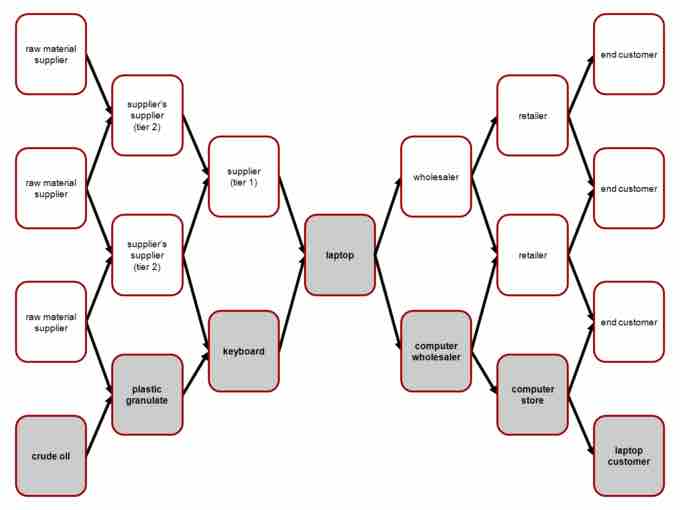Supply chain management (SCM) is the management of a network of interconnected businesses involved in the provision of product and service packages required by the end customers in a supply chain. Supply chain management spans all movement and storage of raw materials, work-in-process inventory, and finished goods from point of origin to point of consumption.
Another definition is provided by the APICS Dictionary, when it defines SCM as the "design, planning, execution, control, and monitoring of supply chain activities with the objective of creating net value, building a competitive infrastructure, leveraging worldwide logistics, synchronizing supply with demand and measuring performance globally. "
Supply chain management must address the following problems:
Distribution network configuration: number, location and network missions of suppliers, production facilities, distribution centers, warehouses, cross-docks and customers.
Distribution strategy: questions of operating control (centralized, decentralized or shared); delivery scheme (e.g., direct shipment, pool point shipping, or cross docking), DSD (direct store delivery), closed loop shipping; mode of transportation (e.g., motor carrier, including truckload, LTL, or parcel); railroad; intermodal transport, including TOFC (trailer on flatcar), and COFC (container on flatcar); ocean freight; airfreight; replenishment strategy (e.g., pull, push or hybrid); and transportation control (e.g., owner-operated, private carrier, common carrier, contract carrier, or 3PL).
Trade-offs in logistical activities: The above activities must be well coordinated in order to achieve the lowest total logistics cost. Trade-offs may increase the total cost if only one of the activities is optimized. For example, full truckload (FTL) rates are more economical on a cost per pallet basis than less than truckload (LTL) shipments. If, however, a full truckload of a product is ordered to reduce transportation costs, there will be an increase in inventory holding costs, which may increase total logistics costs. It is, therefore, imperative to take a systems approach when planning logistical activities. These trade offs are key to developing the most efficient and effective Logistics and SCM strategy.
Information: Integration of processes through the supply chain to share valuable information, including demand signals, forecasts, inventory, transportation, potential collaboration, etc.
Inventory management: Quantity and location of inventory, including raw materials, work-in-process (WIP), and finished goods.
Cash-flow: Arranging the payment terms and methodologies for exchanging funds across entities within the supply chain.
Supply chain execution means managing and coordinating the movement of materials, information, and funds across the supply chain. The flow is bi-directional.

Supply Chain
A supply and demand network